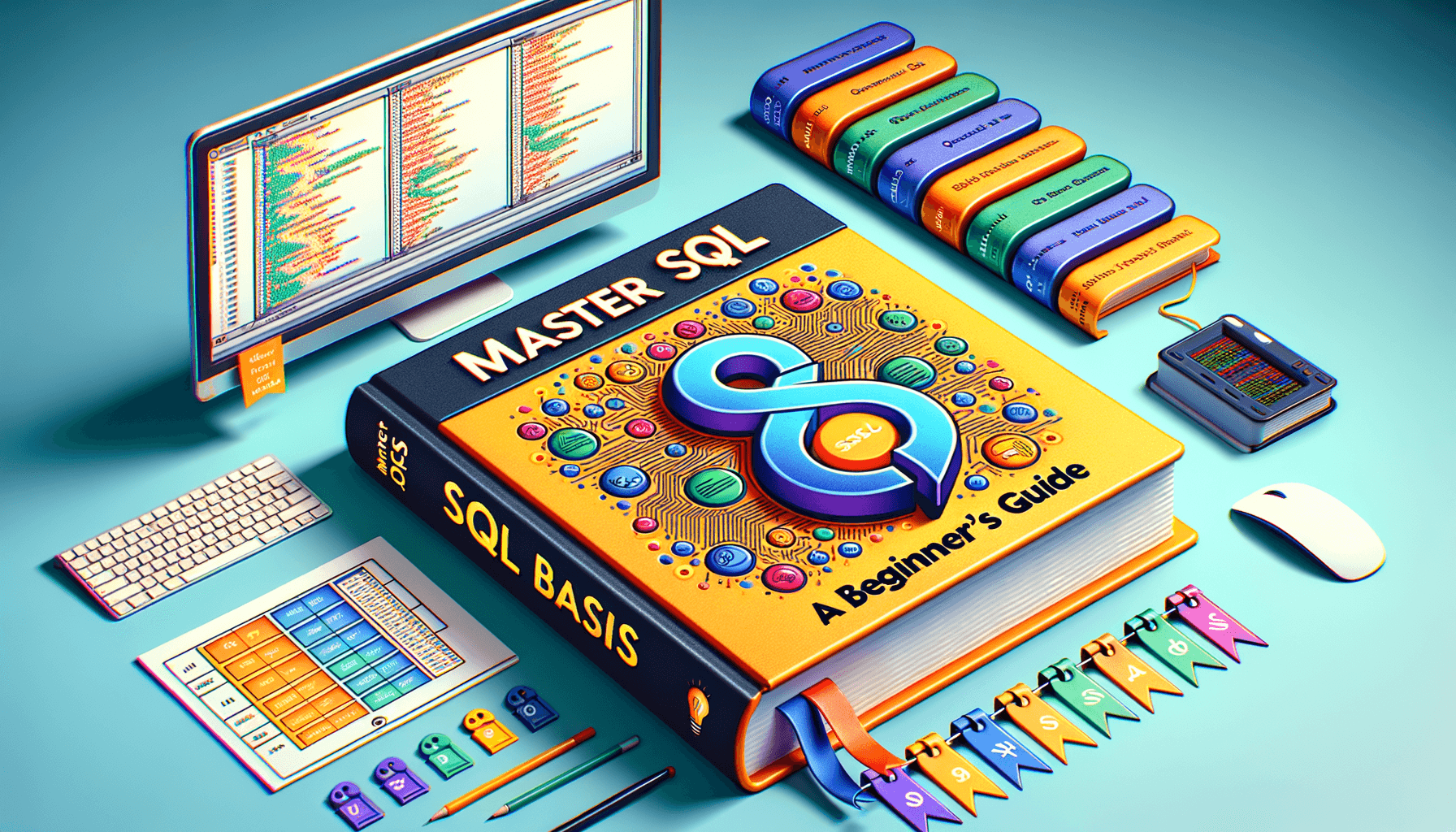A big variety of articles and resources

Mastering the Fundamentals: Learn SQL Basics Today
 Sia Author and Instructor
Learn SQL
Sia Author and Instructor
Learn SQL
7 minute read
Understanding SQL and Its Importance
What is SQL?
SQL, or Structured Query Language, is a powerful programming language designed specifically for managing and interacting with databases. In today's data-driven world, SQL is an essential skill for professionals working with databases, data analytics, and business intelligence. This beginner's guide will help you master the fundamentals of SQL, covering topics such as creating and modifying database tables, querying data, and using aggregate functions.
Why Learn SQL Basics?
Whatever you’re hoping to do with data, having SQL skills is likely to be key. Despite the fact that SQL is quite old, some version of it is used in the databases of just about every company on earth. Whether you’re interested in doing data science or simply accessing and analyzing a little bit of your company’s data, chances are SQL fundamentals are going to be required.
Applications of SQL in Various Industries
SQL is used across a wide range of industries for various applications, including:
- Data Analytics
- Business Intelligence
- Web Development
- Database Administration
Mastering the essentials: a guide to basic SQL queries. SQL importance, practice tips, common commands, and setting up environment for efficient data management.
Setting Up Your SQL Environment
Before diving into SQL queries and commands, it's important to understand the basics of SQL databases and the relational model. In this section, we'll cover how to create, modify, and manage database tables using SQL.
Basic SQL Commands and Syntax
Understanding the basic SQL commands and syntax is crucial for anyone looking to work with databases. SQL commands are used to interact with the database, retrieve data, and perform various operations.
SELECT Statements
The SELECT statement is one of the most fundamental SQL commands. It is used to retrieve data from one or more tables. For example:
SELECT * FROM employees;
This command retrieves all columns from the employees table.
Filtering Data with WHERE
The WHERE clause is used to filter records that meet certain conditions. For instance:
SELECT * FROM employees WHERE department = 'Sales';
This command retrieves all employees who work in the Sales department.
Sorting Data with ORDER BY
The ORDER BY clause is used to sort the result set by one or more columns. For example:
SELECT * FROM employees ORDER BY last_name ASC;
This command sorts the employees by their last names in ascending order.
Mastering these essential SQL concepts will set a strong foundation for more advanced techniques.
Creating and Managing Database Tables
Creating and managing database tables is a fundamental skill in SQL. This section will guide you through the essential commands and syntax needed to create, modify, and delete tables in your database.
Querying and Retrieving Data
Using SELECT to Retrieve Data
In SQL, we express our requests to the database as “queries”. For example, we might send a query — an instruction — to a database to return a specific subset of data, like a particular table, or to update a particular value in the database. The SELECT statement is fundamental for retrieving data from a database. For instance, to get data on salaries from our company’s database, we might use:
SELECT * FROM salaries;
Filtering Results with WHERE
To refine the data retrieved by a SELECT statement, the WHERE clause is used. This allows you to specify conditions that the data must meet. For example, to get the salary details of employees with a specific job title, you might write:
SELECT * FROM salaries WHERE job_title = 'Engineer';
Sorting and Limiting Results
Sorting data helps in organizing the results in a meaningful way. The ORDER BY clause is used to sort the data based on one or more columns. For example, to sort the salary data in descending order, you would use:
SELECT * FROM salaries ORDER BY salary DESC;
Additionally, you can limit the number of rows returned by a query using the LIMIT clause. For instance, to get the top 5 highest salaries, you might write:
SELECT * FROM salaries ORDER BY salary DESC LIMIT 5;
Aggregating Data in SQL
Aggregating data is a powerful technique that allows you to summarize and analyze your data using various aggregate functions. In this section, we'll cover some common aggregate functions and how to use them in your SQL queries.
Combining Data from Multiple Tables
Understanding Joins
To master SQL for beginners, understanding how to combine data from multiple tables is crucial. The JOIN clause allows you to combine data based on a related column. There are several types of joins, such as inner join, left join, and right join.
Using INNER JOIN
An inner join returns records that have matching values in both tables. For example, to join the "employees" and "departments" tables, you can use the following query:
SELECT employees.first_name, employees.last_name, departments.name FROM employees JOIN departments ON employees.department_id = departments.id;
Using LEFT JOIN
A left join returns all records from the left table and the matched records from the right table. If there is no match, the result is NULL from the right side. This is useful when you want to retrieve all records from one table regardless of whether they have a corresponding record in another table.
Understanding how to use different types of joins is essential for working with relational databases effectively.
Combining data from multiple tables is a crucial skill for any data professional. Our comprehensive courses will teach you how to efficiently merge datasets, ensuring you can handle complex queries with ease. Visit our website to explore our course catalogue and start advancing your SQL skills today!
Conclusion
Mastering the fundamentals of SQL is an invaluable skill in today's data-driven world. As we've explored in this article, SQL provides powerful tools for accessing, manipulating, and analyzing data. From creating and modifying database tables to querying and aggregating data, the basics of SQL lay the groundwork for more advanced data tasks. If you're eager to dive deeper, consider enrolling in an interactive SQL Fundamentals course to further enhance your skills. With dedication and practice, you'll be well-equipped to tackle complex data challenges and unlock valuable insights from your data.
Frequently Asked Questions
What is SQL?
SQL, or Structured Query Language, is a powerful programming language designed specifically for managing and interacting with databases. It is used to query, update, and manage data stored in relational databases.
Why should I learn SQL basics?
Learning SQL basics is essential for anyone working with data. SQL is widely used in various industries for data analysis, database management, and business intelligence. Understanding SQL can help you extract meaningful insights from data and improve decision-making processes.
What are some common applications of SQL?
SQL is used in various industries for tasks such as data analysis, database management, business intelligence, and reporting. It is commonly used in finance, healthcare, retail, and technology sectors to manage and analyze large datasets.
How do I choose the right SQL database?
Choosing the right SQL database depends on your specific needs and use cases. Popular SQL databases include MySQL, PostgreSQL, SQLite, and Microsoft SQL Server. Consider factors such as scalability, performance, and ease of use when selecting a database.
What are some basic SQL commands I should know?
Some basic SQL commands include SELECT, INSERT, UPDATE, DELETE, and CREATE TABLE. These commands allow you to retrieve, modify, and manage data in a database.
How can I start learning SQL?
You can start learning SQL by enrolling in online courses, reading tutorials, and practicing writing SQL queries. Interactive platforms and coding exercises can also help you gain hands-on experience with SQL.
Related Articles

Mastering Basic SQL Queries for Your Next Interview
6 minute read

Mastering Data Management: Learn SQL for Beginners
10 minute read



